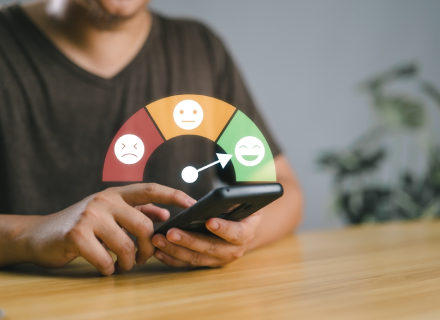A sound customer strategy decides the fate of a business, when it comes to maximising and consolidating profits, along with getting new investments on board. However, the task is not that easy, especially in a situation where you, as an entrepreneur, are trying to increase customer loyalty without first understanding the reasons behind why your existing customers are leaving.
So why is customer retention so important? Andrew Gibson, Director of Content Marketing at Skipio (a small-business software solution that is transforming customer communication forever), cites an old business rule that says it’s six times more expensive to acquire a new customer than it is to keep an existing one.
“In other words, it’s a heck of a lot harder to convince a new potential buyer that you’re worth their money than returning customers who already like your product or service. The key is making sure your current customers continue to like you. How do you do that? Well, let’s look at the top three reasons that customers leave businesses,” the marketing strategist states further.
Going Through The Stats
Emplifi, the leading unified customer experience platform, 2022 released “11 key things consumers expect from their brand experiences today,” a report that offered deep insights into customer expectations for B2C brand experiences.
The report talked about everything from expected customer service response times and preferred communication channels to just how integral CX is to brand loyalty. Surveying more than 2,000 consumers from the United States and the United Kingdom, Emplifi found that 86% of consumers would leave a brand they were once loyal to after only two to three bad customer service experiences. Some 63% of the survey participants confirmed they would leave a brand because of poor customer experience, and 49% admitted they had left a company they were loyal to in the past 12 months for that reason.
The survey only went on to prove how important customer experience (CX) is for a business’ growth. The report revealed slow response time as the leading contributor to a negative experience, followed by a lack of 24/7 customer service support. Some 52% of respondents expected brands to respond to customer service enquiries via digital channels within an hour, while 22% expressed a preference for social media, 19% for email and 16% for website chat.
In this article, we will discuss why companies face higher customer attrition rates at times and how they can solve the problem.
Be Mindful About ‘Bad Experience’
Citing a May 2024 study by HelpScout, Andrew Gibson stated that 78% of customers backed out of a purchase because of a bad service experience.
In the late 1970s, a study was commissioned by the White House Office of Consumer Affairs, and the top reason for customers leaving (over 70%) was the “rudeness or apathy from a company or brand employee”. Forty years down the line, this still has remained the primary reason behind customers not rallying behind a brand.
The remedy here is to train the employees about the “Customer First” and “Customer is God” approaches and they should not be let out of the shop’s door unless they are happy.
“Despite your best training efforts, though, there may still be times when a customer has a bad experience. In this case, it’s best to immediately remedy the situation and promise the customer that it won’t happen again. Throwing in a discount on their next purchase goes a long way in these situations. The quicker you do this, the more likely the customer will be to give you another chance,” Gibson remarked.
Customers Want Consistency
Consumers hate inconsistent information. If you are dialling a company’s customer support number with a question and don’t like the answer, what will you do? You will try to call back and ask some other customer service executive the same question, hoping for a different answer.
Self-service or digital support is becoming more popular. Customers are finding it quicker and easier to visit a website, read the frequently asked questions or interact with an AI-fuelled chatbot. However, there are times when they feel it necessary to talk to a human voice.
“It should be an easy, seamless transition, but some companies hide behind a wall of digital support and make it difficult for a customer to connect to a live agent. Furthermore, some companies bury their customer support number on their website, making it difficult, if not impossible, to find,” says world-renowned customer service and CX expert Shep Hyken, while citing a 2022 study, which found around 71% of customers ditching a company for the same reason.
“You can’t be great one day, not so great the next day, average another day, etc. Inconsistency erodes confidence. 59% of the customers we surveyed would walk if they didn’t know what to expect. Customers want a consistent and predictable experience. That gives them confidence that they know what to expect every time they do business with you,” Hyken added further.
Make The Rewards Tempting
Having a loyalty programme is a must for any 21st century business to ensure repeat visits and product buys from existing customers.
“It’s worth noting that the average American household is involved in 29 of these programmes, but did you know that they only actively use (earning or redeeming just one point per year) 12 of them? What does that tell you? That the loyalty programme itself isn’t enough to keep your customers coming back for more,” Andrew Gibson continued.
“For example, let’s say that there are two restaurants right down the block from your customer’s office. The food and service are fantastic at both, but one has a loyalty programme that gives them a free side for every USD 100 spent, and the other has a loyalty programme that gives them a free entree for every USD 100 spent. Now, where do you think your hungry customer is headed for lunch every day?” he added.
While the companies often get enticed by the proven “recipe” of rewarding customers for their loyalty like offering occasional discounts, letting them try out new products before release, and throwing in an extra service for free every now, customers sometimes want to be more than just another number.
Developing a personal relationship with their customers will not only increase a company’s loyalty game, but will give the customers a reason to brag to their friends about their favourite brand, serving two purposes at once: Customer Retention and Free Word of Mouth Advertising.
Honest Communication: Another Key
Long wait times and poor response times, or just failing to fix the problem are the major catalysts behind people ditching your products, as they believe that you gave them “Broken Promises.” Another phenomenon most companies fail to take note of is “Buyer’s Remorse,” a sense of regret customers experience after making a purchase, knowing that the investment from their end was big and they could have gone for a better alternative than your product. In some cases, buyer’s remorse can influence the customer leaving if they aren’t made to feel sufficiently comfortable in their purchase, and if negative consequences emerge early in the customer experience/relationship.
Here, the ability to communicate with customers (also giving honest replies to their queries becomes critical starting a strong customer relationship. Don’t keep your customers in the dark on important events.
You have to master the art of communicating consistently across channels like email, chat, phone etc. While it may sound like “too much hard work,” customers want an effortless experience and always seek businesses that will deal effectively with their queries.
Better Deals Always Await Customers
A customer can ditch you if he/she finds a considerably cheaper or more convenient deal for a comparable product or service elsewhere. In a competitive business environment, entrepreneurs always need to look out what their rivals are doing, in terms of quality, availability and price.
As a business leader, aim to be disruptive. At the same time, focus on developing loyalty programmes and customer retention strategies to ensure they are future-proof. In this age of AI and data science, market research tools are your best allies for understanding rapidly changing consumer behaviour.
Ensure that your deals are at the forefront of the customers’ minds. Business text messaging is a fantastic way to do this, as customers are always on their phones and getting updated on what’s new. As per a report from SimpleTexting, more than 90% of business owners see higher conversion rates via text messaging.

